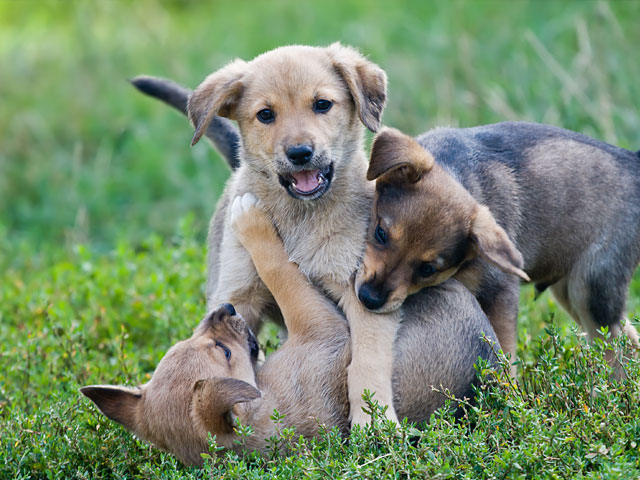A HOLIDAY YOUR DOG CAN BE THANKFUL FOR!
Make sure to give your dog lots to be thankful for this November – a good home, fun training, tasty treats, plenty of play time and lots and lots of love. But also make sure to keep your fuzzy buddy safe. Here's a few important tips to follow:
FOOD
- If you treat your dog to a bite of turkey here and there, make sure that it is well cooked. Dogs can get sick from salmonella just like us.
- Speaking of salmonella, your dog can get it from raw batter that contains eggs. No licking the bowl clean!
- Stick to the lean cuts – too much fat in a dog's diet can lead to pancreatitis, a life threatening condition. Your dog will be just as happy with a little white meat!
- No turkey bones or carcass. Bird bones are especially dangerous for your dog.
- Keep your dog away from under-cooked or raw bread dough – it can cause gas and bloating in your dog's stomach, which can be at best uncomfortable and at worst very dangerous.
- Here's a list of common foods that can be toxic to dogs. (Raisins are common in stuffings, but can cause kidney failure in some dogs.)

- Follow sensible precautions – keep the trash away from where your dog can get at it, and empty it as soon as possible. Watch out for decorative plants that might be dangerous. Here is a list of plants toxic to dogs. Here's one for cats.
- If you think your pet might have eaten something toxic, call the ASPCA Point Control Hotline at 888-426-4435. Possible signs are pain, vomiting, diarrhea, sudden changes in behavior, lethargy.
GUESTS
- Is your dog nervous or shy with guests? Don't force your dog into interaction that they're not comfortable with. Give them the freedom to hang out in another room or their crate with a favorite toy or chew-bone.
- If your dog is overly excited with guests, it can be a good idea to keep your dog in a back room for the first half hour or so after guests arrive to give them a chance to calm down before you let them out. Be sure to give them a peanut-butter stuffed Kong or bone or a bully stick while they're waiting.
- Lots of guests means lots of comings and goings, and that means open doors your dog can escape through. Watch the doors very closely. You can also place an x-pen around doorways that your guests can move out of the way but will block your dog if necessary.
- Make sure your dog is wearing an ID tag with your phone number on it (and I recommend having the word “Reward” as well). Micro chipping your dog can ensure that if it's picked up by animal control that it will be reunited with you.
Best Dogs Ever hopes all of your and your pets have a very Happy Thanksgiving!






